
The scarlet macaw is a large yellow, red and blue Neotropical parrot native to humid evergreen forests of the Americas. Its range extends from southeastern Mexico to Peru, Ecuador, Colombia, Bolivia, Venezuela and Brazil in lowlands of 500 m (1,600 ft) up to 1,000 m (3,300 ft), the Caribbean island of Trinidad, as well as the Pacific island of Coiba. Formerly, the northern extent of its range included southern Tamaulipas. In some areas, it has suffered local extinction because of habitat destruction, or capture for the parrot trade, but in other areas, it remains fairly common. It is the national bird of Honduras. Like its relative the blue-and-yellow macaw, the scarlet macaw is a popular bird in aviculture as a result of its striking plumage.
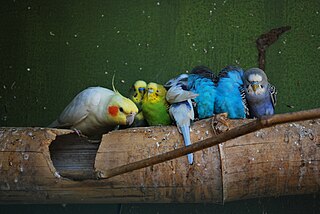
Aviculture is the practice of keeping and breeding birds, especially of wild birds in captivity.

The pileated gibbon is a primate in the gibbon family, Hylobatidae.

The Okarito kiwi, also known as the rowi or Okarito brown kiwi, is a member of the kiwi family Apterygidae, described as new to science in 2003. The species is part of the brown kiwi complex, and is morphologically very similar to other members of that complex. It is found in a restricted area of the Ōkārito forest on the West Coast of New Zealand's South Island, and has a population of only about 600 birds.

Psittacine beak and feather disease (PBFD) is a viral disease affecting all Old World and New World parrots. The causative virus—beak and feather disease virus (BFDV)—belongs to the taxonomic genus Circovirus, family Circoviridae. It attacks the feather follicles and the beak and claw matrices of the bird, causing progressive feather, claw and beak malformation and necrosis. In later stages of the disease, feather shaft constriction occurs, hampering development until eventually all feather growth stops. It occurs in an acutely fatal form and a chronic form.
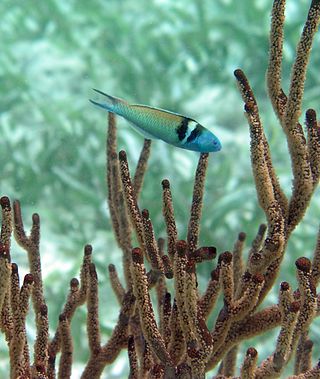
Since declaring independence in 1981, Belize has enacted many environmental protection laws aimed at the preservation of the country's natural and cultural heritage, as well as its wealth of natural resources. These acts have established a number of different types of protected areas, with each category having its own set of regulations dictating public access, resource extraction, land use and ownership.

Chipangali Wildlife Orphanage is a not-for-profit organisation dedicated to the rescue and care of orphaned, injured, abandoned, abused or confiscated wild animals in southern Africa. It is located in Bulawayo, Zimbabwe.

After declaring independence in 1981, Belize enacted the Wildlife Protection Act, which is the main source of wildlife law in Belize. Wildlife in Belize is defined as any undomesticated mammal, reptile or bird, amphibian and any egg, nest or part or product thereof. Although Belize is only two hundred miles (320 km) long and a little more than sixty miles (97 km) wide, it hosts a remarkable abundance of flora and fauna. It is the home of more than 150 species of mammals, 549 birds, 150 amphibians and reptiles, nearly 600 species of freshwater and marine fish and 3,408 species of vascular plants.

Parrots (Psittaciformes), also known as psittacines, are birds with a strong curved beak, upright stance, and clawed feet. They are conformed by four families that contain roughly 410 species in 101 genera, found mostly in tropical and subtropical regions. The four families are the Psittaculidae, Psittacidae, Cacatuoidea (cockatoos), and Strigopidae. One-third of all parrot species are threatened by extinction, with a higher aggregate extinction risk than any other comparable bird group. Parrots have a generally pantropical distribution with several species inhabiting temperate regions as well. The greatest diversity of parrots is in South America and Australasia.
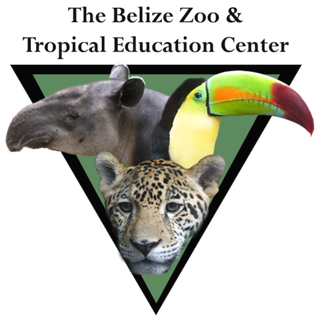
The Belize Zoo and Tropical Education Center is a zoo in Belize, located some 47 kilometres (29 mi) west of Belize City on the Western Highway. Set in 12 hectares, the zoo was founded in 1983 by Sharon Matola. It is home to more than 175 animals of about 48 species, all native to Belize. The natural environment of Belize is left entirely intact within the zoo. The dense, natural vegetation is separated only by gravel trails through the forest. The Belize Zoo and Tropical Education Center receives over 68,000 visitors annually, with 15,000 being students, teachers, and parents.
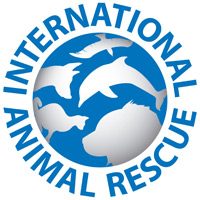
International Animal Rescue (IAR) is an animal protection and conservation non-profit organisation that comes to the aid of suffering animals with hands-on rescue and rehabilitation and the protection of wildlife habitats. IAR returns rehabilitated animals to the wild while also providing permanent sanctuary for those that cannot fend for themselves. Its work includes cutting free and caring for captive bears in India and Armenia, rescuing and rehabilitating orangutans and other primates in Indonesia and treating injured and orphaned howler monkeys in Costa Rica. IAR strives to educate the public in the humane treatment of all animals and the preservation of the natural environment. International Animal Rescue has offices in the United Kingdom, United States, India, Indonesia and Malta.

The Macaw Society is a long-term research project on the ecology and conservation of macaws and parrots under the direction of Donald Brightsmith and Gabriela Vigo of the Schubot Center for Avian Health at the Texas A&M University. The project has been working with wildlife and local communities since 1989. The long-term research and monitoring have provided many insights into various aspects of parrot and wildlife of south-eastern Peru. Macaws are among the most effective flagship species for ecosystem conservation in the Amazonian rainforest.
The Phnom Tamao Wildlife Rescue Centre is a wildlife centre located roughly 25 miles (40 km) by road south of Phnom Penh, Cambodia. The centre was established in 1995 and with an area of over 6,000 acres of protected regenerating forest, this is the largest zoo in Cambodia. Since 2001, PTWRC has been run by the government institution of Cambodian Forestry Administration in partnership with an environmental non-profit organization called Wildlife Alliance. Wildlife Alliance animal husbandry specialists, veterinarians, and care takers assist in the feeding and care of animals and operations. PTWRC currently houses over 1,200 rescued animals from 102 species including endangered Asian elephants, tigers, Pileated gibbon, Siamese crocodile, Malayan sun bears, among many others. Many of the species are listed as Endangered or Vulnerable by the International Union for Conservation of Nature (IUCN).
The American Federation of Aviculture, Inc. (AFA) is a national organization dedicated to aviculture, whose purpose is to educate the public and assist members regarding best practices for keeping and living with exotic birds. Local affiliate bird clubs throughout the United States, including Puerto Rico, along with national and international specialty organizations; comprise the Federation. The American Federation of Aviculture is registered as a non-profit 501(c)3 educational organization, with a business office located in Austin, Texas.

The grey parrot, also known as the Congo grey parrot, Congo African grey parrot or African grey parrot, is an Old World parrot in the family Psittacidae. The Timneh parrot (Psittacus timneh) once was identified as a subspecies of the grey parrot, but has since been elevated to a full species.

The Jatayu and Sparrow Conservation Breeding Centre (JCBC), is the world's largest facility for the breeding and conservation of Indian vultures and the house sparrow. It is located within the Bir Shikargah Wildlife Sanctuary in the town of Pinjore in the State of Haryana, India. It is run by the Haryana Forests Department and Bombay Natural History Society with the help of British nature conservation charity Royal Society for the Protection of Birds. It is 8 kilometres (5.0 mi) from Pinjore and covers 5 acres (2.0 ha).

The Bornean Sun Bear Conservation Centre is a wildlife conservation and research centre for improving animal welfare and rehabilitation of the Malayan sun bear. It also aims to raise public awareness about the plight of the sun bears and to raise conservation awareness about this species.
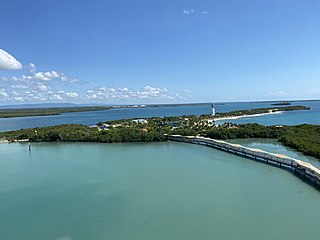
Harvest Caye is a private island owned by Norwegian Cruise Line, located in southern Belize. The caye features wildlife exhibitions including a blue morpho butterfly house.
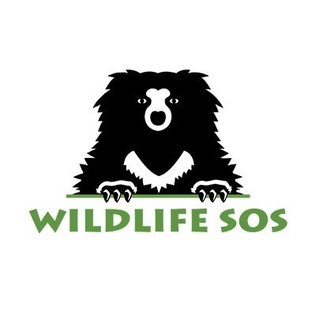
Wildlife SOS (WSOS) is a conservation non-profit organisation in India, established in 1995 with the primary objective of rescuing and rehabilitating wildlife in distress, and preserving India's natural heritage. It is currently one of the largest wildlife organisations in South Asia.



















